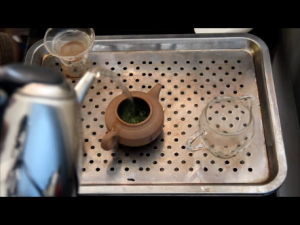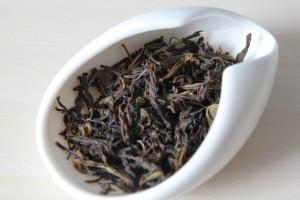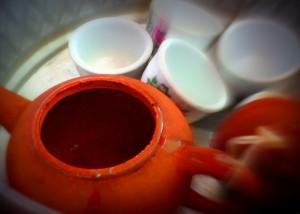It should be clear- at least I hope so- from the writings on this site that I’m passionate about tea. Passionate enough to spend my day reading, writing, drinking, buying, experimenting with, talking about and selling tea. Some say its lunacy but let’s not get there.
My friends would tell you that I love food. I would drive halfway across the island just for a bowl of noodles.
Fusing these two loves seems natural enough or is it?
Here’s something that may surprise people, I hardly ever consume any tea during meal times. There is only notable one exception but we’ll get to that later.
Here are some practical aspects why food and tea are not the bedfellows that food and wine are:
1) Iron Absorption
This may not be applicable for a lot of people but for people like me whose daily tea consumption exceeds 1 liter, I care about any health considerations of tea, positive or negative.
In the 1970s Disler P et al published a paper with the conclusion that consumption of tea prior to mealtimes inhibits iron absorption by up to 60%. Subsequent research by Rasagui I. et al established a negative correlation between iron absorption and consumption of tea during mealtimes.
In 1995, a research team from Qinghai People’s Hospital led by Li Wen published a paper on the link of tea consumption and one of the conclusions drawn was that the polyphenols compounds in the tea causes a reaction with iron compounds to form insoluble substances in the stomach.
*This section is described in greater detail in 杨亚军’s 评茶员培训教材 published by 金盾出版社 in Jan 2011*
For sporadic occasions, this probably wouldn’t matter much but for regular tea drinkers, this is definitely a concern.
As such, regular tea consumption is not recommended at least an hour before and after meals.
2) Brewing Tea

How it is prepared makes a world of difference in the taste as I have written on several occasions.
For most restaurants and eateries, the hardware is missing. That’s to say nothing of the skill and effort of the staff. To be fair, most restaurant service staff look hurried during peak hours, I can’t see them being able to sit down a brew a proper pot of tea.
Back to the equipment, for starters- if you order green, white or yellow tea- you need brewing temperatures of circa 80°C/176°F. Most restaurants do not have variable temperature kettles or thermometers to measure it.
Even quality green tea will taste not fantastic when scalded with boiling water.
So basically you are left with black tea, dark tea and certain oolong teas.
Teas served in most restaurants are basically brewed in huge iron or ceramic pots with the leaves infusing there ad infinitum, topping up with hot water when necessary. If you have any experience with brewing tea, you would instantly see the flags- over-steeping and big pots (oolong particularly suffers from this).
3) Choices of Tea Leaves

In most places in Singapore, you can choose between Pu-er and Jasmine, if you’re lucky you get Shuixian, Tieguanyin and maybe Shou Mei but that’s not really a plethora that you need to crack your heads.
Given the selection on-hand, pairing doesn’t seem such a hard choice any more
Are There Any Exceptions to This Rule?
Perhaps the only occasion that I would actually enjoy tea with food is the local favorite- Bak Kut Teh or Pork Ribs Soup.
The mixture of greasy pork and strongly flavored soup makes tea a perfect in-meal companion and the iron-rich pork-as well as accompanying organs- kind of balances out the iron deficiency woes.

In Hong Kong, some traditional Dim Sum restaurants provide a gaiwan and tea tray for patrons so that would also be another exception.
